KYB Round-Up: Gas-A-Just vs MonoMax vs Excel G Shocks
Stylethority is reader-supported. When you buy through links on the site, we may earn a commission.
You’d be surprised how often I get asked about these three shocks and their differences. I mean, it’s expected – each of them is considered a KYB flagship product.
People don’t compare MonoMax to Excel G, they’re too different. However, I do get queries about KYB Gas-A-Just vs MonoMax on one hand; and the Gas-A-Just vs Excel G on the other.
If you’ve been having the same thoughts, this in-depth post is for you.
I know some of you are busy, though. So before the charts and paragraphs, here’s a quick overview of where each shock excels:
| Product | Image | ||
|---|---|---|---|
|
For heavy hauls & off-road terrain
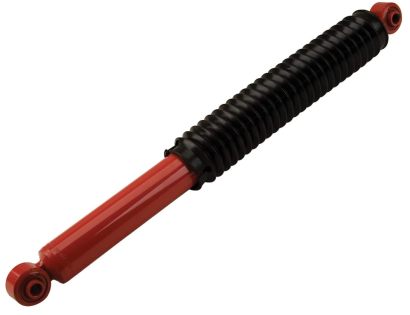
|
KYB MonoMax
|
Check Prices & Fit |
| Product | Image | ||
|---|---|---|---|
|
Balanced performance & large tire support
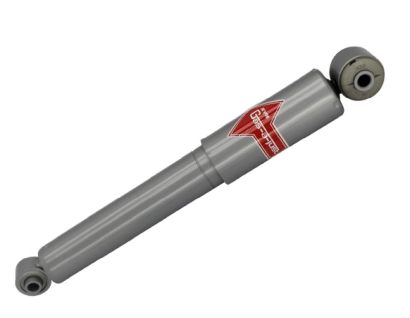
|
KYB Gas-A-Just
|
Check Prices & Fit |
| Product | Image | ||
|---|---|---|---|
|
As close to OEM as it gets
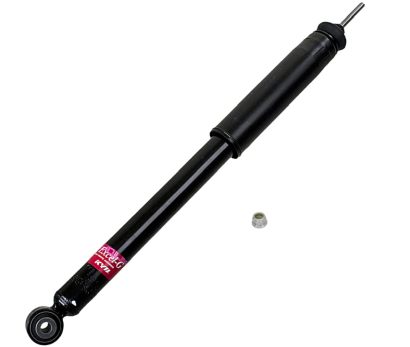
|
KYB Excel G
|
Check Prices & Fit |
Explaining damping differences:
A KYB shocks graph
Most people know what damping is (and how it feels).
Some don’t realize that damping itself is a combination of compression and rebound cycles. Without being too technical:
- Compression deals with bump/road imperfection absorption when your wheel moves upwards to tackle the irregularities. Higher compression means less body roll and better control at higher speeds or harsher terrain.
– - Rebound is the process of the suspension returning back to its initial position after the bump/road imperfection has been met. Higher rebound rates again mean less body roll, but they also mean your shock will be ready to compress again faster.
That said, here are the overall damping rates of the three KYB shocks. I’ve used stock (OEM) shock absorbers as the 100% baseline:
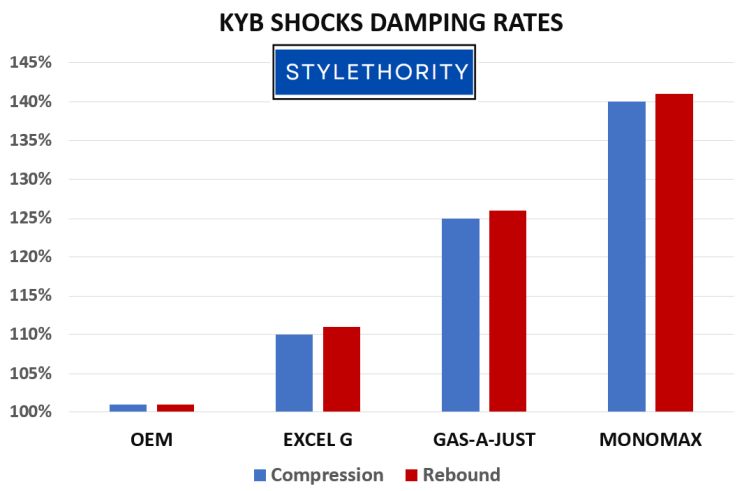
In other words, KYB goes from +40% on MonoMax, to +25% on Gas-A-Just to ~10% on Excel G.
However, as I said, there is a catch. Technically, the MonoMax shocks will ride harsher due to its increased compression + rebound rates.
Things change when you factor in how loaded your vehicle is, though. On empty loads, a MonoMax will ride noticeably stiffer than any either KYB. On heavy loads, however, any Excel G will rattle and even Gas-A-Justs won’t feel as smooth.
Additionally, with anything else except MonoMax, you risk component damage. There’s a moderate chance that road bumps/potholes will cause your axle to hit the frame when hauling heavier loads.
KYB MonoMax vs Gas-A-Just shocks:
The higher-end lineup
Why higher-end?
Well, it all starts with the shock body design. Unlike the twin-tube Excel G, both the MonoMax and Gas-A-Just are monotube shock absorbers.
Basically, you have two separate chambers: one for the gas (nitrogen) and one for the hydraulic fluid. This design approach vastly improves damping capabilities and prevents any aeration.
The monotube design and the larger tire support is where the similarities between Gas-A-Just and MonoMax end.
First of all, KYB MonoMax is fully equipped to deal with towing trailers or extreme terrain. This readiness is a mix of reinforced construction (zinc-coated piston ring), dust boots to deal with gravel/dirt, and improved oil diffusion.
Furthermore, some MonoMax applications fully support lifted vehicles.
Gas-A-Justs are mainly aimed at stock-height vehicles and more specifically – light trucks or SUVs/crossovers.
That said, Gas-A-Justs have slightly more travel than the MonoMaxes.
As I noted earlier, there is a significant difference in how these two shocks are calibrated. A difference between 25% firmer damping than OEM and 40% is quite significant; especially on unloaded vehicles.
Put the MonoMax on any heavy-duty truck that you want to use for towing, modifications, or extreme terrain traversing. The heavy-duty construction and several design perks totally make a difference.
Leave the Gas-A-Justs for stock vehicles with larger tires that need a more controlled ride than OEM. If you have a light truck that doesn’t haul much, Gas-A-Just will be better too. The MonoMax will ride too stiff on emptier vehicles.
| Product | Image | ||
|---|---|---|---|
|
For heavy hauls & off-road terrain

|
KYB MonoMax
|
Check Prices & Fit |
| Product | Image | ||
|---|---|---|---|
|
Balanced performance & large tire support

|
KYB Gas-A-Just
|
Check Prices & Fit |
KYB Gas-A-Just vs Excel G:
So close, yet so far
I realize why people compare these two shocks, but I still feel they’re too different.
As I mentioned earlier, the first big difference lies in the design.
Excel G are twin-tube shocks, much like most OEM shock absorbers. They don’t deal as well with heat dissipation and the smaller piston means you get subpar damping compared to the monotube Gas-A-Just.
Furthermore, while Gas-A-Justs support larger wheels or tires, Excel G can’t handle anything more than stock tires.
In all other aspects, KYB Gas-A-Just takes the core Excel G features and takes them up a notch. Both shocks feature improved steering response, cornering capabilities, and rear support to enhance your brake performance.
If you want your vehicle to feel as close to OEM as possible, get the Excel G shocks or struts.
As I’ve outlined in other posts, I believe they are the best options for sedans.
On light trucks or SUVs with aftermarket tires, I’d always go with Gas-A-Just absorbers. Especially if you’ll be loading your car a bit more. Gas-A-Just is a more progressive shock, they regulate their damping rates by adapting to weight.
Also, keep in mind that there’s no GR2 to compare the Gas-A-Just to. All GR2s are now Excel G shocks.
| Product | Image | ||
|---|---|---|---|
|
As close to OEM as it gets

|
KYB Excel G
|
Check Prices & Fit |
| Product | Image | ||
|---|---|---|---|
|
Balanced performance & large tire support

|
KYB Gas-A-Just
|
Check Prices & Fit |
Summary
This post outlines most of the main differences I usually tell people about when they inquire about these three shocks. As I said, I consider each one of these a KYB flagship, catering to a specific set of needs any car owner might have.
If you’re a vanilla vehicle enthusiast, you can check my article on how Excel G compares to OEM shocks. I’ve mentioned some more in-depth differences there, as here I mainly focused on aftermarket suspension solutions.
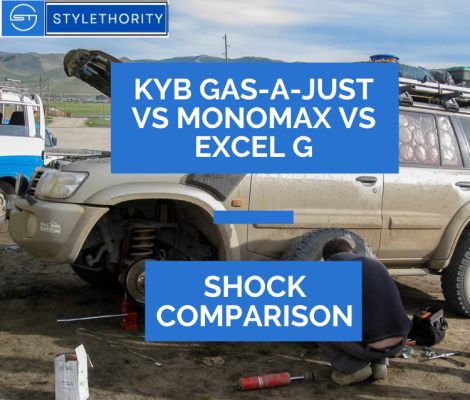
In case you want to venture out to other similarly priced brands, there’s always Monroe. Generally, the equivalent to KYB MonoMax is the Monroe Magnum – I’ve written about these shocks too.
Though in all fairness, I consider MonoMax to be more heavy-duty and better equipped for off-road conditions. Both can be great solutions as RV shocks on a budget too.
Anyways, if you need any additional information, don’t hesitate to shoot a comment under this post. I’ll do my best to reply.
Some general pointers to vehicles I’d recommend each shock absorber for:
–
- KYB MonoMax: For HD trucks such as Chevy Silverado 1500/2500/3500; Ford F-150, F-250, or F-350 Superduty or 4×4; Dodge Ram 2500 or 3500; Toyota Tacoma or Tundra.
– - KYB Gas-A-Just: For light or mid-sized trucks such as Dodge Dakota or SUVs like Toyota 4Runner, some SUVs like Ford Bronco. These work exceptionally well for classic muscle cars such as Chevrolet El Camino, older Camaro, Monte Carlo, many 60s-80s Ford cars.
– - KYB Excel G: For SUVs ranging from Toyota RAV4 to Honda CR-V; struts for sedans or compact cars ranging from any Honda Accord, Pilot, or Fit; Lexus ES300 or ES350; Toyota Corolla, Nissan Altima etc.
Cheers!
- Woolx vs Smartwool: Discussing Some Details - October 4, 2023
- Best Struts For Honda Accord & Element: What Works - September 22, 2023
- Bilstein vs Monroe Shocks: My Opinion On What Works Best - September 19, 2023


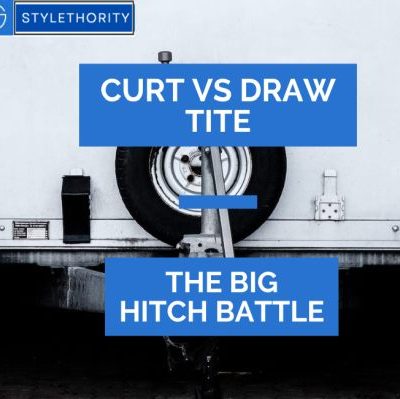
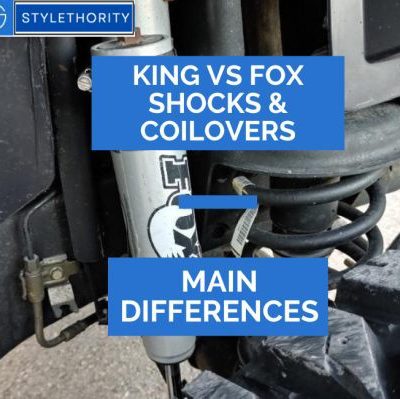
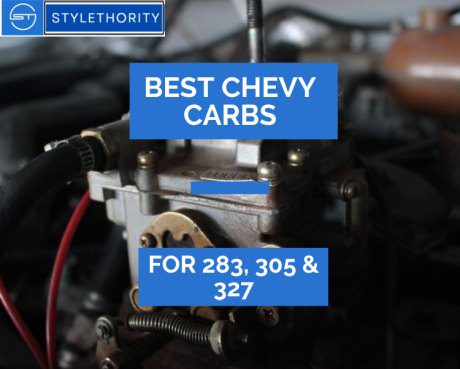
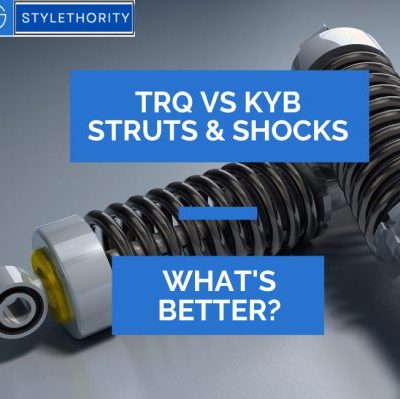
hi Xander
thanks for your post – really great information.
what’s your opinion of putting Excel G up front and Gas A just at the rear for cars like Toyota 4Runner? Does that give the best of both worlds?
Hey Cliff!
It’s possible, I believe, though I’ve not personally done this (or seen somebody in my circles) do this.
Theoretically, it should be alright as long as you keep the pairs the same (Excel G + Excel G at front; GaJ x GaJ at the rear). I worry that the slightly higher damping of the Gas A Justs might affect your front suspension. It shouldn’t be too much of a gap, but different people ‘feel’ their vehicle in different ways, right?
Maybe double check at the 4runner forums if people did this and it felt alright to them?
Be sure to carefully check the Excel Gs too – there are different sets for 2WD or 4WD 4Runner. Some online vendors don’t clarify which fits the proper setup and I’ve heard people returning the ‘wrong’ WD Excels due to sloppy ride feel.
Cheers!
Xander
Que es más suave para un hachbak mazda 2.5 2012 excel G o a gas a just
What do you recommend for a Toyota Tacoma (crew-cab 08) V6.
The Excel G or the Gas-Adjust?
and when you say ‘stiffer ride’ what does that look like, feel like?
Niall, hi!
I’d definitely go for the Gas-A-Just in the case of a Tacoma. If you have more $$$ to play around, you can also consider Bilsteins as they’re a slight upgrade. But if it’s Excel-G vs Gas-A-Just, definitely the latter.
Re: stiffer ride -> usually, by ‘stiffer ride’ I mean suspension that stays firmer in the case of road irregularities/potholes. You’ll feel them a bit more on your ass, to be honest.
However, your vehicle will also be quicker to react/recover from these irregularities; it will also experience less body roll.
If your suspension is ‘soft’ your car might bottom out a bit too much/have too much of that ‘floaty’ feeling. Some people prefer the cushier + bouncy feeling of softer, smoother drives. But this is better only as long as you of a) cruise on highways or b) drive your vehicle in places with VERY good road infrastructure (a.k.a. not much bumps and other irregularities).
Otherwise you risk worse body roll, worse control over your vehicle at higher speeds, and you put additional wear and tear on your other suspension components.
You feel stiff suspension more (=slightly rougher ride), but this is to preserve both your shocks’/struts’ life and your other components’ longevity. Stiffer suspension is also generally better with cornering and when driving at higher speeds.
So basically, stiff = better handling (and especially at higher speeds) + better treatments on your components, but you sacrifice a bit of comfort.
Soft = more comfortable and smooth ride, great for low-to-medium speeds, worse vehicle control over road irregularities/when cornering, and might jeopardize other components’ longevity if too soft for your road infrastructure.
There are two additional factors: a) worn-out suspension is usually soft and squishy, so some people are surprised by the ‘roughness’ of new struts and b) some struts start by riding stiffer and ‘break in’ with time for a mellower ride feel.
Hope that helped!
Xander
Thanks Xander for your detailed response. I wanted to get the Billsteins (For the Tacoma) but could not find any that came with the springs attached (Full assembly I guess you say) I put Bilsteins on the back already. what I currently experience is that my truck rides fine on the highway but on side streets that are old or slightly broken up everything seems to shake, make noise, and it’s just annoying and im going at just in town road speeds… 20-30 mph. thanks again.
Glad I could help out!
Yeah, Bilstein usually does ‘naked’ shocks and struts. I guess for your Taco you’re looking at either the Bilstein 4600 or the 5100.
Keep in mind that the 5100 series is designed for lifted trucks; the 4600 is the most optimal choice for stock-height trucks.
In general, Bilstein is higher quality than KYB and the 4600s specifically find a very sweet spot between firmer/softer handling.
In any case, I hope whatever you chose will perform well and restore your ride!
Cheers and best of luck,
Xander
Hi Xander, such an awesome breakdown on the three types of the KYB shocks. I own a 1999 Mercury Mountaineer 6cyl which I don’t use for hauling or any trailer. It’s just a family SUV AWD ride.
I initially thought the Monomax would be ideal but after further research I found that this may be give us too stiff of a ride. So I’m now thinking to go with the gas adjust.
Wondered what you think may be best for this type of vehicle. If it helps to know, I’m also replacing much of our front end suspension as it’s going out soon. Upper and lower control arms with ball joints, outer tie rods and sway bar links. I have about 165,000 miles on the car.
Thought it would be a good to have these old original shocks replaced while I’m pulling everything else out. 🙂
Thanks in advance for your help.
Richard, hi!
First of all, thanks for the kind words. Glad to be of help!
Judging by your needs, yeah, Gas-A-Justs would be a better fit than the MonoMax.
If you don’t have significant budget restrictions, you can also consider the Bilstein 4600. The Mountaineer was quite similar to the Ford Explorer, right? I’ve seen the Bilstein 4600s fare great on other Ford full-sized SUVs (think Expedition or Excursion). They’re also made for stock-height SUVs and strike a sweet balance balance between on-road/off-road and lighter/heavier loads.
Depending on availability, though, they might be some 20-25% more expensive, prices have been pretty chaotic over the past 2 years…
So, yeah — I’d go with Gas-A-Justs, but definitely check the Bilstein alternative.
And best of luck with the complete vehicle overhaul! Hopefully, all works out well and you invigorate your Mountaineer 🙂
Cheers!
Xander
Hi Xander, thanks for your reply. That is correct, the Explorer is identical to the Mountaineer. The front end suspension which I’m working on is a xerox copy.
I saw the Blistein 4600 and nearly fell off the chair when I saw the price differences over the KYB. I can pick up the Excel-G for $35 or the Gas-A-Just for $42 through RockAuto.
I can pick up a whole set (front and back) of the KYB for less than half the prices I saw online for the Blistein. I have read some great reviews for the Blistein shocks but would be satisfied with the KYB as there have been many positive recommendations for this brand also. Especially over the Monore it seems.
As mentioned in my previous message, I don’t do any off-road driving, nor pull a trailer. I have the factory original rims and tires and don’t use the vehicle for work. Mostly only as a daily family driven vehicle. Any additional loads is usually just a few bags of grocery. 🙂
I don’t want a harsh, stiff ride and would rather not have to feel every road bump, potholes and parking lot entry hitting us hard on the seat. Surely don’t want to pop out any dental fillings.
From your review you mention that the Excel-G is already offering up to 10% more damping over the OEM.
After giving this more thought, I’m now wondering if perhaps I would be better suited with the standard Excel-G over the Gas-A-Justs for a more smoother less stiffer ride.
The MonoMax is definitely crossed off the list at this point and now trying to decide over the Excel-G or Gas-A-Justs. I’m beginning to lean more towards the Excel. Given my usage, and concerns, would it be best to go with the excel or gas-a-just?
And thanks for the good luck gesture on our front end rebuild. Yes, Hoping for an all around smoother ride. This vehicle has been feeling like a beast lately. Very sloppy and lot’s of suspension noise.
Hey again!
Correct, with those extra ~10%, the Excel G would be the closest to how your OE shocks were. Doubly so because they are twin-tube shocks, unlike the monotube design of both Gas-A-Justs and Monomax. I assume the Mountaineer – especially at your vehicle year, had twin-tubes originally too.
Usually, I prefer monotube shocks on bulkier SUVs or trucks (be it light-duty or heavy-duty vehicles). They deal better with heat dissipation, are sturdier in more challenging road conditions etc. etc.
However! You seem to have a very vanilla/light take on driving your Mountaineer around. So honestly, even the Excel Gs should suffice.
Just keep in mind that unlike some other brands’ twin-tube shocks, the Gs need a bit more of a break-in period to settle down. The gentler damping rates should fare well with city roads/light commuting/the applications you mentioned imho, yes.
I just searched around and found this thread on some Explorer forums, which covers the Explorer gen matching your Mountaineer. Maybe worth an additional read, if you haven’t seen it? https://www.explorerforum.com/forums/threads/one-more-time-kyb-excel-g-or-kyb-gas-a-just.487797/
Cheers!
Xander
Hi Xander, thanks for your reply. As always, your messages are so detailed oriented. Awesome communication. Three thumbs up. 🙂
Thanks for sharing the forum link. I do have an account with them since 2017. Just never thought to check any of the posts out for shocks here. Lot’s of great info there.
After mentioning the bilstein 4600 series shocks you got me thinking long about this one. Looks like those are using the Monotube feature also like the Gas-A-Justs. I’m now leaning more towards the bilsteins.
Is the bilstein comparable to the Excel G in terms of damping? Close to OEM or would the 4600 be more similar to the Gas-A-Justs?
Would the 4600 offer a smoother softer ride than the Excel G? Or would the 4600 be better suited for a larger vehicle that’s used for carrying loads?
Thanks for the kind words, Richard! Lots of cookie-cutter sites out there, I’m trying my best to make a (small) difference 🙂
Yeah, funny trivia is that Bilstein themselves patented the monotube shock absorber design! So pretty much all of their products are monotubes.
The 4600 is the ‘most basic’ version of Bilsteins and the only OE ride feel/OE grade shock they have.
The brand focuses on lifted vehicles/modded vehicles, so the 4600s are the only product that caters to stock-height vehicles (SUVs or trucks, Bilstein has a minimal selection of products for sedans/passenger cars).
Considering the usage you mentioned, though, I think you’ll be spending too much $$$ on them for your needs. Not sure about current prices, but a pair of 4600s usually ran for like $150-$160 which is a whole 4x kit of Excel-Gs. You’ll be overpaying in my opinion. The ride feel in your specific case shouldn’t be THAT much too different, speaking in price-to-improvement terms.
In general cases, the 4600s are sturdier and feature better overall hardware (from the dust boots to the piston to the shock body itself), which is a part of why they’re more expensive.
Then again, if you drive your Mountaineer as you mentioned, you shouldn’t put too much strain on the Excel-Gs and wear them out as some heavy SUV drivers would. So it should be fine, I guess?
Cheers!
Xander
Thanks for the trivia insight about Bilstein originally patenting the monotube design. Didn’t know that.
Just the thought of the Bilsteins 4600 possibly being even a little better than the KYB Excel-G got me wanting them now. If even priced higher. I will admit there was a bit of sticker shock when I first saw the pricing in comparison to the KYB’s but the more I looked into them the more they seemed like a better quality product.
I’ve always preferred to seek out the better quality name branded products, even if it cost a bit more. I do this with almost all my power tools. And have went overboard on several occasions with no regrets.
With both the Excel-G and 4600 being considered an OE replacement, the monotube design sounds like a real winner.
Does the monotube design create more or has more of a dampening ride over the Excel-G thus resulting in a harder or harsher ride?
With cost not being the deciding factor, I would be most pleased with a smoother ride over bumps, pot holes and road irregularities without sacrificing any comfort and handling.
Hey Richard,
>Does the monotube design create more or has more of a dampening ride over the Excel-G thus resulting in a harder or harsher ride?
In the case of Bilstein 4600’s design/valving, it should feel somewhat smoother than the Excel-G. As I said, normally (on other vehicle applications), the 4600s don’t have that much of a ‘break-in period’ as the Excel-Gs do, either.
If you have the money to splurge, the 4600s will always be the better choice ride-wise, design-wise, and overall durability-wise. There’s a reason why people (and especially SUV/light truck owners) swear by them so much.
>the more they seemed like a better quality product
Bilstein is pretty much the best brand for mass-market stock height vehicle applications – miles ahead of Monroe, better than KYB, and universes ahead of knock-off brands like FCS, Sensen, and the other copycat brands. On lifted vehicles Bilstein is more of a best value option, but then again, modded vehicle communities have a very peculiar culture and niche brands catering to them.
Cheers!
Xander
Hello Xander,
Thanks for the good information on shock absorbers.
I would like to have your opinion on the choice between these shock absorbers:
1 – B4 OE Replacement – Part Number: 24-196918 at $125;
2 – KYB Gas-aJust – Part Number: 553386 at $100.
I have a 2013 Mercedes-Benz GLK250 and I tow a 2800 pound travel trailer about 7000 km or 4500 miles to 10,000 km or 6000 miles per year.
What would be my best choice?
Harold
Harold, hi!
I will admit I’m not that familiar with the GLK250 you speak of, so I’m not sure I can be 100% correct. However, I have two notes:
1) I’d usually pick Bilstein for vehicles such as Mercedes or BMW, considering that both are German and there’s a lot of interconnectedness in how Bilstein suspension feels/flows on ‘domestic’ vehicles. It’s similar to the relationship between KYB and Japanese cars.
2) Do you only have the B4 option from Bilstein’s line-up for your GLK250? For higher-demand applications, I usually lean towards recommending Bilstein B6, the next tier of Bilstein suspension.
The company itself recommends B6 for things like heavier loads or caravans/trailers: https://workshop.bilstein.com/en/additional-business-with-bilstein-b6/ This might bump the price up a bit, but I’m not 100% sure whether B4s would fare that well with a trailer, if you also load the vehicle…
Cheers,
Xander
Thank you for your prompt response.
I can’t find Bilstein B6 at the normal dealer, I found it at the performance dealer. Currently for 2 Bilstein B4 shock absorbers, my Bilstein price is $335 CAD. So the price for 2 shock absorbers is about double in Canada.
We load the vehicle with stock and put two 100-pound kayaks on the roof.
Harold
Ouch, that’s some steep pricing!
If it’s strictly between B4 and Gas-A-Just, I’d lean towards the Gas-A-Just just because they’re monotube and can cope with higher vehicle strain/heavier loads. B4s should generally ride smoother, but as they’re an exact OE fit/twin-tube design, I worry whether they will compromise vehicle handling when you have the trailer on.
B6 is still the best option, but if it’s between these two, I’d prefer to have the Gas-A-Just in all honesty.
Maybe KYB MonoMax could be an option too, though as I’ve mentioned in the article they can be ride a bit rougher. But for towing a trailer of the capacity you mentioned, there shouldn’t be too much difference between Gas-A-Just and MonoMax, imho.
Best,
Xander
Thank you very much, it is really appreciated
I replace my shock absorbers on a Mercedes GLK 250 4matic 2013 with “BILSTEIN | B6 Shock Street Performance REAR Part #: 24-164429”. During installation, the original shock absorbers are 13mm or 1/2″ longer than the BILSTEIN | B6. According to the BILSTEIN website, it is mentioned that these BILSTEIN | B6 shock absorbers are compatible with my car without changing the coil spring. Do you think this would be a problem?
THANKS!
Harold, hi again!
Sorry for the late reply, I haven’t been around much these days.
If the official Bilstein states that they fit your vehicle, it shouldn’t be an issue regardless whether you swap them without changing the coil spring.
Just in case, though, I’d write to the Bilstein customer support to confirm with them. Try reaching them on Twitter or Instagram too, I’ve heard good things about their responsiveness.
Cheers!
Xander
Hi
Great article.
I have a 2014 Ram1500 4×4, 6.4 bed and with a topper. I occasionally tow a 7500ib trailer with a WDH
I’m going to fit plus 35 variable rear springs. Front will be KYB Strut plus. I’m retaining the stock height.
For the rear, should I use MonoMax in preference to Excel G shocks.
Do you have any other recommendations.
For the record, I’m replacing the air suspension.
Danny, hi!
MonoMax will be way, way better for your application. Excel G is too weak for a light truck (I think they max out at SUVs, and even on some SUVs they’re a stretch).
The MonoMaxes offer a heavy-duty operation that’s perfectly compatible with stock height vehicles, so you’re fine on that front too.
What is the base of your KYB Strut Plus assembly, though? I hope it’s a Gas-A-Just based assembly, as it should be a better fit for your vehicle. KYB bases their struts on either Excel G or Gas-A-Just and I haven’t been a fan of the Excel G assemblies on light trucks either.
Another option (especially if your assemblies are G-a-J based) is to just find Gas-a-Justs for your rear too. Especially if you don’t tow THAT often and you’d benefit from a middle of the pack damping/ride feel.
Cheers and happy holidays!
Xander